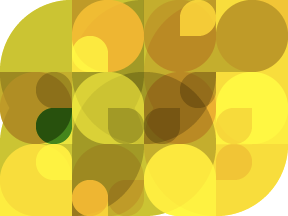Our contribution to the book Ant Colonies: Behavior in Insects and Computer Applications: «KANTS: A Self-Organized Ant System for Pattern Clustering and Classification».
Archivo por meses: enero 2011
Reactive Planning for RTS games
The paper «Reactive Planning Idioms for Multi-Scale Game AI» (Weber et al.), published last year in the proceedings of the IEEE Conference on Computation Intelligence and Games (CIG 2010), proposes a technique called reactive planning for designing a bot for Real-time strategy games (RTS). The agent is implemented in ABL (a behavioral language), an environment that allows the programmer to embed the multi-level reasoning that is required for efficient and complex RTS bots. A bot for RTS games (such as the StarCraft) must deal simultaneously with several goals, making intelligent high-level decisions while micromanaging units in combat, and ABL provides features such as daemons, messaging (memory), managers and micromanagement behaviors that can be of great help for such task. The authors propose a specific framework, for the structure of the bot and interfaces, and demonstrate that the resulting agent is able to beat the built-in StarCraft bot. However, when tested against moderately skilled human players, the agent performs poorly. As far as we understood, this work deals mainly with traditional Artificial Intelligence. The open question now is: can we model some kind of adaptive behavior in this ABL environment?
Paper Seminar: Reactive Planning Idioms for Multi-Scale Game AI
El viernes que viene, a las 12:30 y en la sala de reuniones de la ETSIIT, Carlos Fernandes hará una presentación sobre el trabajo Reactive Planning Idioms for Multi-Scale Game AI. En este seminario veremos cuáles son las claves de este trabajo en un ambiente más o menos informal, con el objetivo principal de aplicarlo a nuestra investigación sobre juegos en tiempo real
Also in Rome… Evolvable Agents and Population Structures
In addition to our improvemnts to the Sandpile operator, we were also presenting at LION conference a study on the performance of different population structures over our P2P optimization model. The paper is entitled «Analysing the Performance of Different Population Structures for an Agent-based Evolutionary Algorithm» and will be available soon as an LNCS publication.
You can find an abstract and the presentation bellow.
The Evolvable Agent model is a Peer-to-Peer Evolutionary Algorithm which focuses on distributed optimisation over Peer-to-Peer infrastructures. The main idea of the model is that every agent (i.e. individual) is designated as a peer (i.e. network node) and adopts a decentralised population structure defined by the underlying Peer-to-Peer protocol newscast. In that context, this work aims to compare performances of the approach considering two additional population structures other than newscast: a ring and a Watts-Strogatz topology.
The Sandpile Mutation in Rome
The first time we presented the Sandpile Mutation was in GECCO (Atlanta, USA), in 2008. However, that version had some limitations that in the past couple of years we have tried to overcome. The first results of this new and improved version of the Sandpile Mutation, a Self-Organized Criticality (SOC) operator for Genetic Algorithms specifically designed for dynamic optimization, will be soon available in the LNCS volume that gathers all the contributions to the Learning and Intelligent Optimization congress, held last week in Rome. In summary, this operator uses SOC systems’ abillity to completely or partly reorganised a system after a disturbance, and evolves a varying mutation rate with a particular distribution that overcomes some of the difficulties found in dynamic optimization problems.
Here is the abstract and the presentation.
This paper describes an alternative mutation control scheme for Genetic Algorithms (GAs) inspired by the Self-Organized Criticality (SOC) theory. The strategy, which mimics a SOC system known as sandpile, is able to generate mutation rates that, unlike those generated by other methods of adaptive parameter control, oscillate between very low values and cataclysmic mutations. In order to attain the desired behaviour, the sandpile is not just attached to a GA; it is also modified in order for its conduct to reflect the stage of the search, i.e., the fitness distribution of the population. Due to its characteristics, the sandpile mutation arises as a promising candidate for efficient and yet simple and context-independent approach to dynamic optimization. An experimental study confirms this assumption: a GA with sandpile mutation outperforms a recently proposed SOC-based GA for dynamic optimization. Furthermore, the proposed method does not increase traditional GAs’ parameter set.
GeNeura se independiza
Desde el día de hoy, GeNeura es un grupo independiente del Plan Andaluz de I+D+i de la Junta de Andalucía. Para los que necesiten un poco de contexto, se trata de un plan regional para incentivar a los grupos de investigación. Hasta el momento, todos los componentes de este grupo pertenecíamos al grupo Grupo CASIP, enmarcado dentro del Departamento de Arquitectura y Tecnología de Computadores. Sin embargo, llega un momento en la carrera profesional en que es necesario independizarse, así que hemos decidido crear un nuevo grupo, provisionalmente con el número TIC 024.
El grupo oficial continuará las líneas de trabajo del grupo extraoficial, las que se han venido exponiendo en este blog: algoritmos de colonia de hormigas, algoritmos evolutivos, sistemas complejos, usando sustratos como la computación P2P y servicios web. El software libre, además, será lo que nos defina, con investigación relativa al software libre y un enfoque libre no sólo de las aplicaciones creadas, sino de la investigación en si.
Por lo pronto y oficialmente, el grupo sólo incluye a Carlos Fernandes y a servidor, pero en breve se irán haciendo nuevas incorporaciones.
2010 in review
The stats helper monkeys at WordPress.com mulled over how this blog did in 2010, and here’s a high level summary of its overall blog health:

The Blog-Health-o-Meter™ reads This blog is doing awesome!.
Crunchy numbers

A helper monkey made this abstract painting, inspired by your stats.
A Boeing 747-400 passenger jet can hold 416 passengers. This blog was viewed about 3,400 times in 2010. That’s about 8 full 747s.
In 2010, there were 26 new posts, growing the total archive of this blog to 88 posts. There were 8 pictures uploaded, taking up a total of 1mb.
The busiest day of the year was July 7th with 56 views. The most popular post that day was Proyectos fin de carrera 2010-2011.
Where did they come from?
The top referring sites in 2010 were twitter.com, atalaya.blogalia.com, facebook.com, Google Reader, and no-mundo.weblog.com.pt.
Some visitors came searching, mostly for openholdem perl, kohonants, autonomic computing seminar, biogeography based optimization, and google ai challenge.
Attractions in 2010
These are the posts and pages that got the most views in 2010.
Proyectos fin de carrera 2010-2011 July 2010
Descargar el Simulador de estrategias militares basado en el comportamiento de las hormigas May 2009
1 comment
Kohonants: a gentle introduction September 2008
5 comments
Porn recognition May 2010
2 comments
Google AI Challenge 2010 September 2010
1 comment